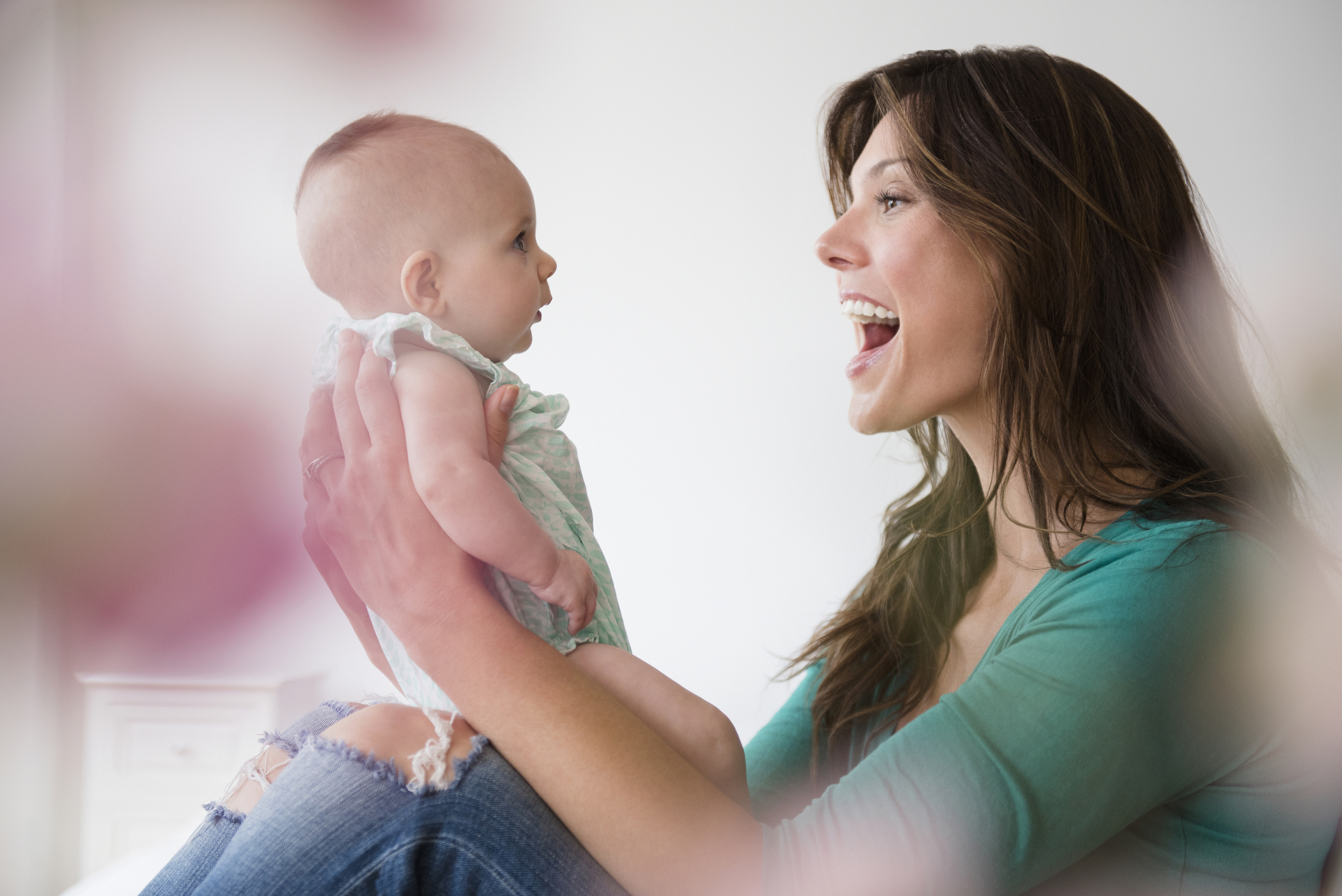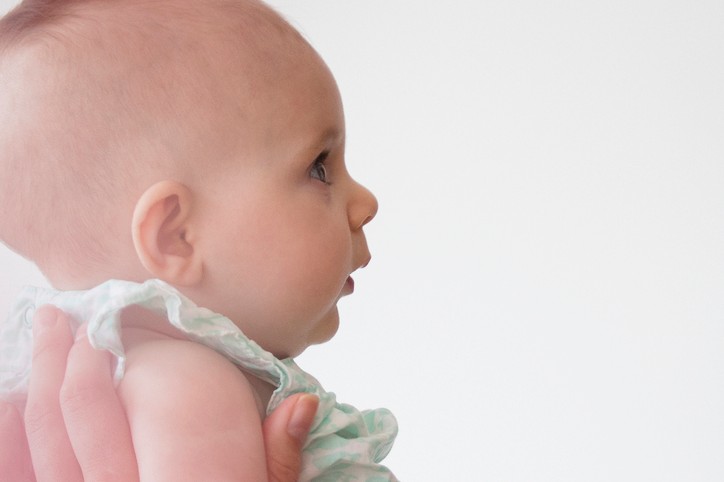We all want to make sure our children hit every milestone on time (or better…) but it’s not always clear what exactly “on time” is and when one should worry. In fact, there can be variation in when children reach many crucial developmental milestones. That said, for most things, including communication skills, there’s an expected age range in what’s considered “typical.”
“The stages of early speech and language development are universal among humans,” says Leanne Sherred, a speech pathologist and the president and co-founder of Expressable, a speech therapy platform that provides better resources for parents to be involved with their children’s development. “A baby’s cries soon turn into cooing and babbling, and their first words follow shortly after. These foundational language skills reflect the growth and maturation of brain development and they are essential to building more complex language abilities that allow children to clearly express their thoughts, feelings and ideas.”
She goes on to explain that the moment children are born, their parents should closely observe and monitor their speech and language development for the following signs:
Birth to 3 months
- Makes cooing sounds and sighs
- Recognizes your voice
- Cries differently depending on their needs.
4-6 months
- Starts babbling (i.e., “baba” or “mimi”)
- Begins to laugh!
- Follows sounds with their eyes
- Recognizes and responds to the tone of your voice
7 months – 1 year
- Says their first word(s)
- Focuses on the direction sounds are coming from
- Understands basic words like “juice”
- Responds to requests like “sit down”
- Communicates using gestures such as waving or holding up arms
1-2 years old
- Begins to build a vocabulary and regularly learn new words
- Can string two words together, like “more juice,” or “give me”
- Follows basic commands and can understand simple questions
- Enjoys rhymes, songs, and stories
- Can point to pictures in a book when they’re named
2-3 years old
- Has built a vocabulary of 400+ words
- Begins to use two and three-word phrases
- Family and friends can understand what they’re trying to say most of the time
- Can pronounce the sounds /k/ /g/ /f/ /t/ /d/ and /n/
- Will name objects when making a request

The first 3 years of a child’s life are their most formative in terms of speech and language development. “Pre-verbal and verbal communication skills are best achieved in a language-rich environment with consistent exposure to the sights, sounds and speech from the people and world around them,” says Sherred. “Fostering speech and language development doesn’t require scheduled practice or fancy materials – it can be naturally incorporated into daily interactions with your child.” Sherred suggests including language practice into the activities you’re already doing with your child, like eating breakfast, getting dressed, brushing your teeth, riding in the car, etc. Below she outlines a few specific strategies that can be practice at home:
- Offer choices: “Regularly offer your child choices, like what they want to eat or wear. Whenever possible, provide verbal and visual input together – ‘Would you like an apple…. Or banana?’ This not only motivates your child to speak, but gives them a taste of independence. They’ll soon learn that communication is key to getting what they want.”
- Model sounds and speech: “If your child is non-verbal, modeling sounds will encourage them to imitate you. If you hear a car engine, say ‘vroom vroom,’ or if you see a dog, say ‘ruff ruff.’ If your child is already talking, model phrases that are one-word longer than what they’re using. For example, if they reach for a beverage and say ‘juice,”’ you can model, ‘juice please’ or ‘I want juice.'”
- Reading Regularly: “Reading helps children hear and expand their vocabulary, recognize sentence structure, improve comprehension, and stimulate their imagination. As with most things, it’s best to start early – creating reading habits with infants and toddlers helps support early literacy development. When your child reaches a participatory stage, ask them to identify different items in photos. If they’re a little older, ask thought-provoking questions, like ‘why did the character feel that way?’ or ‘what do you think will happen next?'”
- Playtime: “One of the best ways parents can promote strong communication skills is also one of the simplest – playing with their child. The natural back-and-forth of playtime mimics how we communicate. For example, rolling a ball between you and your child requires turn-taking just like a conversation. Playing with your child also helps improve their joint attention (ability for two people to focus on the same task) and cause-and-effect relationships (stack the blocks too high and they’ll come tumbling down).”
What happens if there appears to be delays in speech and language skills?
According to Sherred speech delays affecting about 10% of preschool-age children and language delays affecting about 3% of children.
“Every child develops on their own timeline. While the stages of communication development are universal, there can be variance in when children reach them. This can make it hard for parents and caregivers to know whether their child is simply a late bloomer and will soon be using language and talking a mile a minute or if there’s a more serious problem that requires intervention. While it can be tempting to take a ‘wait and see’ approach, you may be missing the early warning signs of a possible problem.”
It’s important that parents proactively observe their child from the moment they’re born. The good news is that many signs of communication disorders can be observed before a child even says their first word. “The strength of a child’s nonverbal communication is a good early indicator whether they’re progressing typically,” says Sherred who highlights a few early language signs to look for below:
- Your child can focus on a shared object with another individual. This is called joint attention
- They maintain eye contact and respond to your sounds and gestures
- Your child is engaging in play activities
- They can vocalize with babbling (i.e. “baba” or “mimi”) or other utterances when responding
If your child does not appear to be meeting the age-expected milestones mentioned above, you may begin to observe their frustration if they’re unable to communicate their wants and needs. “In instances where a child’s language is developmentally delayed, they may seem to be ‘stuck’ at one certain stage – perhaps relying on gestures or crying to communicate as opposed to developing the use of words,” says Sherred. “That visible (and sometimes audible!) frustration may be an indicator that they need support to grow their communication skills.”








